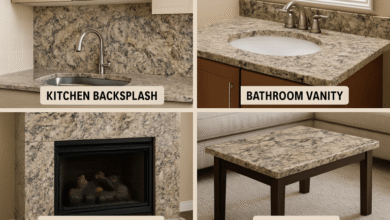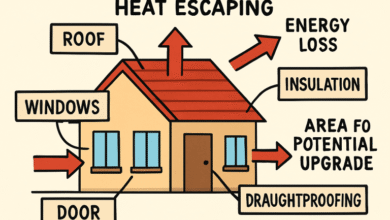Guide to Installing Solar Panels at Home

Installing solar panels at home is one of the most effective ways to reduce power costs and carbon footprint. It’s more than a passing craze; it’s a long-term commitment to energy independence. Before installation, homeowners should understand the processes and prepare.
This article discusses everything from housing appropriateness to permits and avoiding costly mistakes. A methodical plan allows you to safely transition to clean, renewable energy with no surprises. Let us learn how to utilize solar energy responsibly, effectively, and safely at home.
Table of Contents
What Do You Need Before Installing Solar Panels?
Assessing Your Roof’s Condition and Orientation
First, be sure your roof will not require costly repairs in 10-15 years. Solar panels endure for decades, so a strong roof protects them. In the Northern Hemisphere, south-facing roofs receive the most sunlight.
Shade from adjacent trees or buildings may reduce efficiency. Roof angle affects performance, with 30-45 degrees being optimal. If your roof does not meet these specifications, consider repairs or ground-mounted alternatives before installing.
Checking Local Regulations and Permits
Before installation, be sure to check the local zoning and building restrictions. Most localities need solar system permits, which might result in penalties or removal. Consult your city’s building department concerning applications, paperwork, and inspections.
HOA guidelines may apply in some areas. Permit paperwork is often required for solar incentive programs in your area. Hire a contractor who is familiar with local regulations and can manage documents to guarantee that the system is safe and legal from the outset.
Estimating Energy Consumption and Budget
Check your past year’s electricity bills for usual monthly usage. This accurately fits your system—oversizing costs money, while undersizing underperforms. Future improvements, such as EV charging or home expansions, may increase energy use.
Create a fair budget for equipment, labor, permits, and upgrades such as a new roof or electrical panel. Consider refunds and tax credits for immediate savings. Multiple solar panels business bids ensure competitive pricing and help you find the best deal. Consider installation and long-term savings.

How to Install Solar Panels Step by Step
Site Assessment and System Design
Your solar installer will do a full site inspection to determine sun exposure, roof angle, and structural integrity. They’ll use software and measurements to design a solar array that meets your home’s energy demands. Select panel types, inverter systems, and layout designs.
They will also examine the electrical compatibility of your home system. The installer often applies for permissions today. A well-designed system maximizes energy output for your investment, reduces circuit overload, and fulfills code requirements from the beginning.
Panel Mounting and Wiring
Once permissions have been acquired, the installer mounts racks to the roof structure to withstand wind and rain. Panels are aligned and connected to the racks. Electricians connect conduit and wiring from solar panels to the inverter, which converts solar energy into electricity.
A separate connection connects the inverter to your home’s breaker panel. Correct grounding and safety shutoffs are installed by the code. This stage takes between one and three days, depending on the system size. Installation staff adhere to strict safety protocols to protect your property and people.
Connecting to the Grid and Final Inspection
Following system installation, your utility company must allow connection. This technique includes an assessment to ensure safe installation and plan compliance. If all goes well, your home will be linked to the grid.
A bidirectional meter is typically used to track energy returned in exchange for credits. Installers schedule and coordinate final inspections. Turn on the system and create clean power once approved. If your provider permits net metering, you should be able to save money on your power bills while also earning credits.
What Are Common Mistakes to Avoid?
Skipping Professional Inspection
Some homeowners avoid expert evaluations to save time or money, but this frequently results in long-term concerns. Without competent examination, structural flaws in the roof or concealed electrical faults may go undetected. These defects can degrade system performance or generate risks.
An expert installer ensures that your house is ready for installation and that all components operate securely together. They also check for code compliance, which is required to pass inspections and receive rewards. Investing in a professional inspection early helps avoid costly repairs later and ensures your solar panels perform at peak efficiency from day one.
Underestimating Installation Costs
Permits, labor, roof modifications, and electrical installation may be disregarded in favor of panel pricing. Extra expenditures might amount to thousands. Failure to budget for projects leads to delays and financial pressures. Before signing a contract, always obtain an accurate estimate of all expenses.
Consider long-term problems, such as inverter replacement and insurance changes. Incentives can lower prices, but don’t expect them right away. A thorough cost study eliminates surprises and keeps your solar energy system reasonable.
Ignoring Maintenance Needs
Solar systems require less upkeep, yet they are not completely maintenance-free. Dust, bird droppings, and snow reduce panel performance. Ignoring these factors lowers energy output and delays payback. Have your installation check the wiring, inverters, and performance every year.
Some companies provide daily output tracking software. If dips emerge, respond quickly. Clean, debris-free panels maintain efficiency. Check your warranty and service agreements for coverage. Simple maintenance ensures that your solar panels function well for many years.
See Also: Mastering Portable Power Station Maintenance: Essential Tips
Conclusion
Home solar panel installation provides economical and environmental benefits, but it must be carefully planned and executed. You must analyze your roof, follow local rules, and choose the appropriate system size. Professional design, installation, and maintenance will provide years of clean, cost-effective energy.
Avoiding blunders like underestimating pricing or skipping inspections keeps your project on track. Most importantly, understand your energy targets and select a reputable installer. Doing so makes your roof a valuable asset to both your home and the environment.



